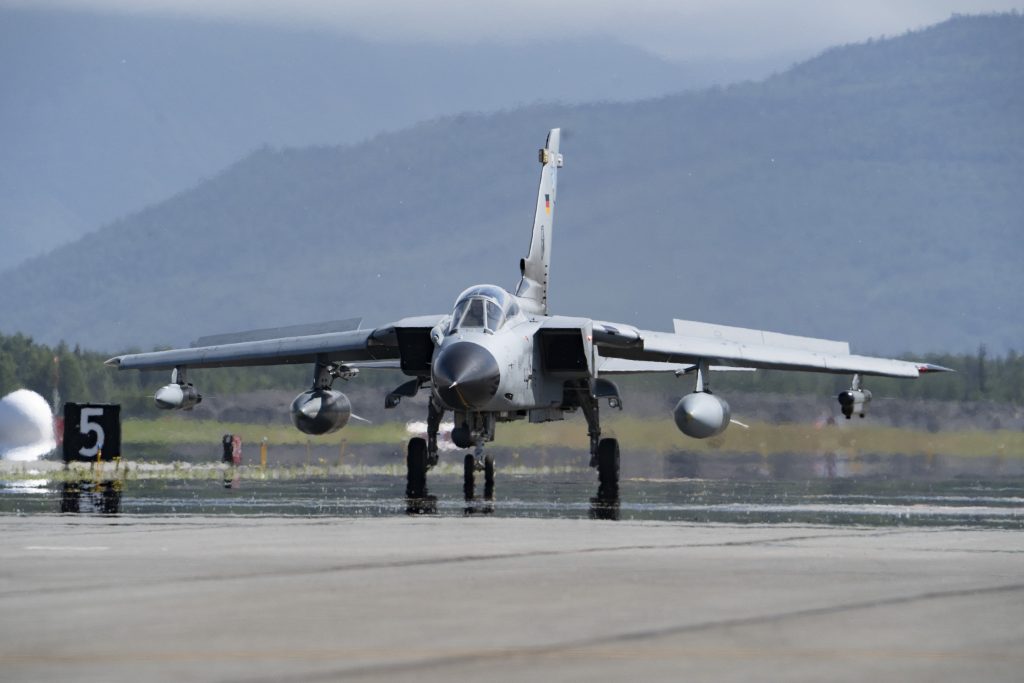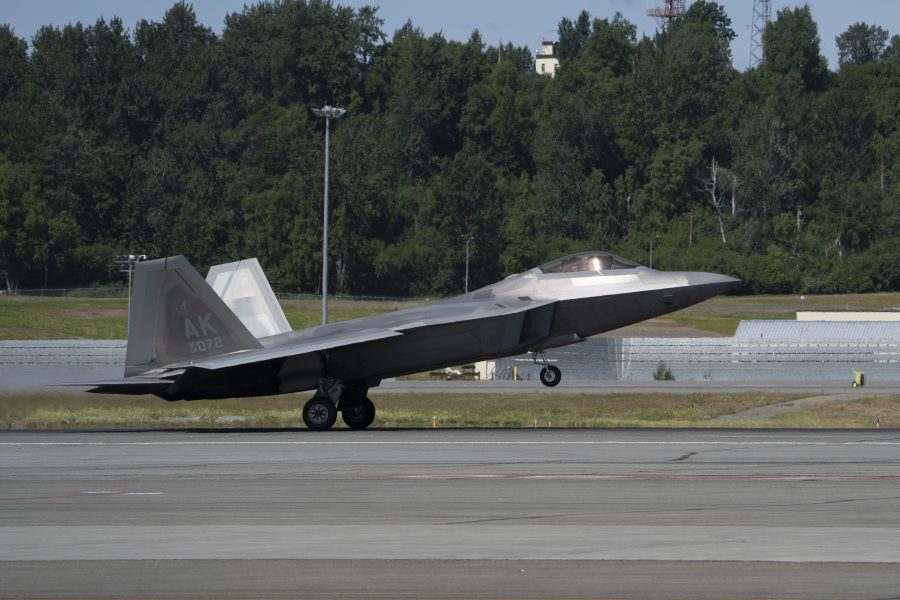Nearly 50 aircraft from the German, French, and Spanish air forces are embarking on a series of exercises across the Indo-Pacific region from June to August, with the U.S. Air Force jumping in on several as well.
Dubbed ‘Pacific Skies,’ the massive deployment highlights Europe’s growing interest in the region, even as the war in Ukraine continues to dominate the continent.
The European aircraft, accompanied by over 1,800 military personnel from the three nations, will conduct exercises across Alaska, Australia, Japan, Hawaii, and India. The air forces of the three partners are already collaborating on the Future Combat Air System, an in-development, sixth-generation fighter aircraft.
“With Pacific Skies 24, we as Europeans show our face in a part of the world that is so important to all of us,” Lt. Gen. Ingo Gerhartz, the German Air Force service chief, said in a release. “Together with Spain and France, we are deploying to the Indo-Pacific region and taking part in five different exercises.”
A dozen German Tornados will be joined by eight German and four Spanish Typhoons, four French Rafales, four German H145M helicopters, four German, two Spanish, and three French A400M transport aircraft, as well as seven A330 MRTT multi-role tankers, totaling 48 aircraft from the three countries.
The ‘Arctic Defender‘ exercise launched in Alaska as the first event in the series. Aircraft from the three nations are engaging in joint tactics and techniques to improve interoperability with U.S. Airmen from Joint Base Elmendorf-Richardson and Eielson Air Force Base in Alaska, incorporating F-22 Raptors from the 3rd Wing. Led by Germany, the exercise aims to train fighters to NATO standards, focusing on primary flight operations and simulated air combat conditions until July 18.
Next on the itinerary is ‘Pitch Black,’ an annual exercise hosted by Australia, running from July 12 to Aug. 2. The U.S. is deploying six F-22s to that exercise as well. This year’s iteration will be the largest in Pitch Black’s 43-year history, featuring over 140 aircraft and a total of 20 participating nations including Singapore, Italy, India, the U.K., and the Philippines.

These exercises underscore Europe’s concerns over China’s increasing military capabilities. During a meeting with U.S. Secretary of Defense Lloyd J. Austin III in May, German Defense Minister Boris Pistorius emphasized Germany’s commitment to promoting peace and stability in the Indo-Pacific. Over the last few years, France and the U.K. have also expanded their regional deployments to bolster regional deterrence missions. Spain has encouraged the European Union to focus on security in the Indo-Pacific, stressing that the region is a “key interest.”
Pacific Skies is a significant milestone for the German Air Force, as it will be the final global appearance of their Tornado aircraft. The fighters have been in operation for the nation since the 1980s and carried combat missions during Operation Desert Storm in the Gulf War. As the last European nation to hold on to these jets, Germany is finally phasing out the fleet between 2025 and 2030.
After Arctic Defender and Pitch Black, some of the aircraft from France, Germany, and Spain will head to Japan for joint training with the Japan Air Self-Defense Force, marking the first simultaneous deployment of air force units from the three countries in the nation. The Japanese defense ministry highlighted that this also marks the first training collaboration between Japanese Airmen and the Spanish Air Force in Japan, and only the second with the German and French air forces. Scheduled from July 19-20 and 22-25, the training will feature combat and tactical missions with Japan’s four F-15 fighters and two F-2 jets.
After completing training in Japan, three German Typhoons will participate in the latter part of the ‘Rimpac’ (Rim of the Pacific) exercise in Hawaii, the world’s largest international maritime exercise organized by the U.S. Pacific Fleet. Then, the Airmen from Germany, France, and Spain will join the ‘Tarang Shakti’ exercise in August, the Indian Air Force’s first multinational aerial exercise, inspired by the USAF’s Red Flag exercise.
